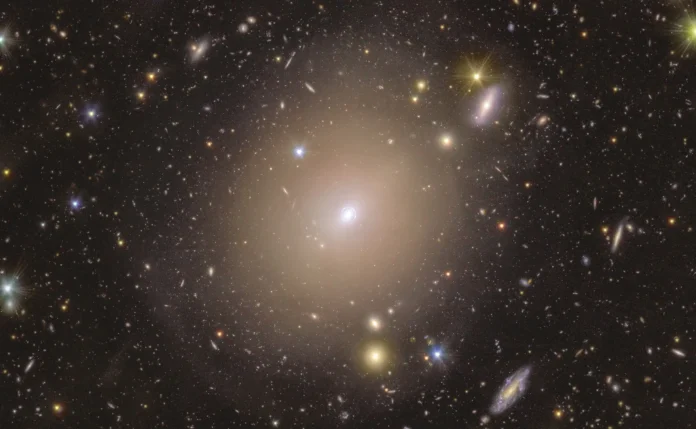The Euclid Space Telescope has captured a rare phenomenon called Einstein’s ring, which indicates a strong curvature of space due to the gravity of a galaxy.
The gorgeous image shows the nearby galaxy NGC 6505 surrounded by a perfect circle of light. The ring allows us to see the more distant galaxy immediately behind NGC 6505, whose starlight is directed around the galaxy in the foreground.
Professor Stephen Sergent, an astronomer at the Open University, said:
“This is a beautiful, unusual, exciting and fortunate find, which is the first time we have heard of it, an Einstein ring as perfect as this is extremely rare. We see the galaxy in the background through the warped space and time of a very close galaxy in the foreground.”
Albert Einstein’s general theory of relativity predicts that light will circle massive objects in space, meaning that galaxies can act as huge lenses, The Guardian explains. Einstein rings are a powerful tool for astronomers because they reveal objects that would otherwise be hidden from view and indicate the mass of the intervening galaxy, including any hidden mass in the form of dark matter.
In this case, astronomers estimate that the foreground galaxy is made up of about 11% dark matter. This is a relatively small fraction, given that dark matter is thought to dominate the total mass of the universe.
Unlocking the secrets of dark matter and dark energy, which together make up 95% of the universe, is the main goal of the European Space Agency’s €1bn mission. Ultimately, the telescope, which can detect galaxies up to 10 billion light years away, aims to create the largest 3D cosmic map ever created. It will allow astronomers to infer the large-scale distribution of dark matter and reveal the influence of dark energy, the mysterious force that accelerates the expansion of the universe.
The telescope will be able to image objects as far away as 10 billion light years, but the latest image shows that its unrivalled ability to make precise observations can reveal new structures in the nearby Universe as well. The galaxy NGC 6505 is about 590 metres from Earth – an arm’s length away by cosmic standards – and the unnamed background galaxy is 4.42 billion light years away. Valeria Pettorino, a researcher at the European Space Agency’s Euclid project, claimed:
“I find it very intriguing that this ring was found within a well-known galaxy that was first discovered in 1884. This galaxy has been known to astronomers for a very long time. And yet this ring has never been observed before. This demonstrates how powerful Euclid is, finding the new even in places we thought we knew well.”
